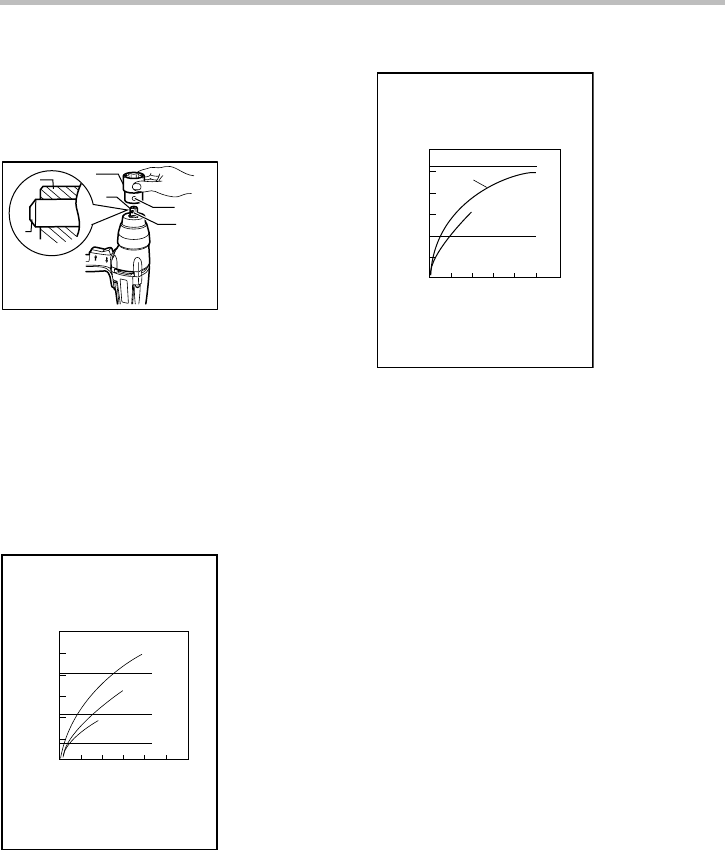
5
Align the hole in the side of the socket with the detent pin
on the anvil and push it onto the anvil of the tool until it
locks into place. Tap it lightly if required.
To remove the socket, simply pull it off.
For tool with firm fit detent pin
1
2
3
4
2
4
007324
To install the socket, align the hole in the side of the
socket with the detent pin on the anvil.
Push the socket onto the anvil until it snaps into place.
Tap it lightly if required.
To remove the socket, depress the detent pin through the
hole in the socket and pull the socket off the anvil.
OPERATION
The proper fastening torque may differ depending upon
the kind or size of the bolt, the material of the workpiece
to be fastened, etc. The relation between fastening
torque and fastening time is shown in the figures.
0
0.5 1
1.5
2
2.5
50
100
150
200
250
300
Standard bolt
Fastening torque (N m)
Fastening time (S)
.
M12X80
(3/4"X3-1/8")
(5/8"X3-1/8")
(1/2"X3-1/8")
3
M16X80
M20X80
004009
0
1234
5
50
100
150
200
250
300
M16
M16(F10T)
High tensile bolt
Fastening torque (N m)
Fastening time (S)
(5/8")
(5/8")
(1/2"X3-1/8")
(1/2")
.
M12X80
M12
6
004010
Hold the tool firmly and place the socket over the bolt or
nut. Turn the tool on and fasten for the proper fastening
time.
NOTE:
• When fastening screw M12 (1/2") or smaller,
carefully adjust pressure on the switch so that the
screw is not damaged.
• Hold the tool pointed straight at the bolt or nut
without applying excessive pressure on the tool.
• If you fasten the bolt for a time longer than shown in
the figures, the bolt or the socket may be
overstressed, damaged, etc. Before starting your
job, always perform a test operation to determine
the proper fastening time for your bolt. Especially
for the bolt over than M12 (1/2"), perform the above
test operation to prevent the trouble on socket or
bolt, etc.
The fastening torque is affected by a wide variety of
factors including the following. After fastening, always
check the torque with a torque wrench.
1. Voltage
Voltage drop will cause a reduction in the fastening
torque.
2. Socket
• Failure to use the correct size socket will cause
a reduction in the fastening torque.
• A worn socket (wear on the hex end or square
end) will cause a reduction in the fastening
torque.
3. Bolt
• Even though the torque coefficient and the
class of bolt are the same, the proper fastening
torque will differ according to the diameter of
bolt.
• Even though the diameters of bolts are the
same, the proper fastening torque will differ
1. Socket
2. Anvil
3. Hole
4. Detent pin


















